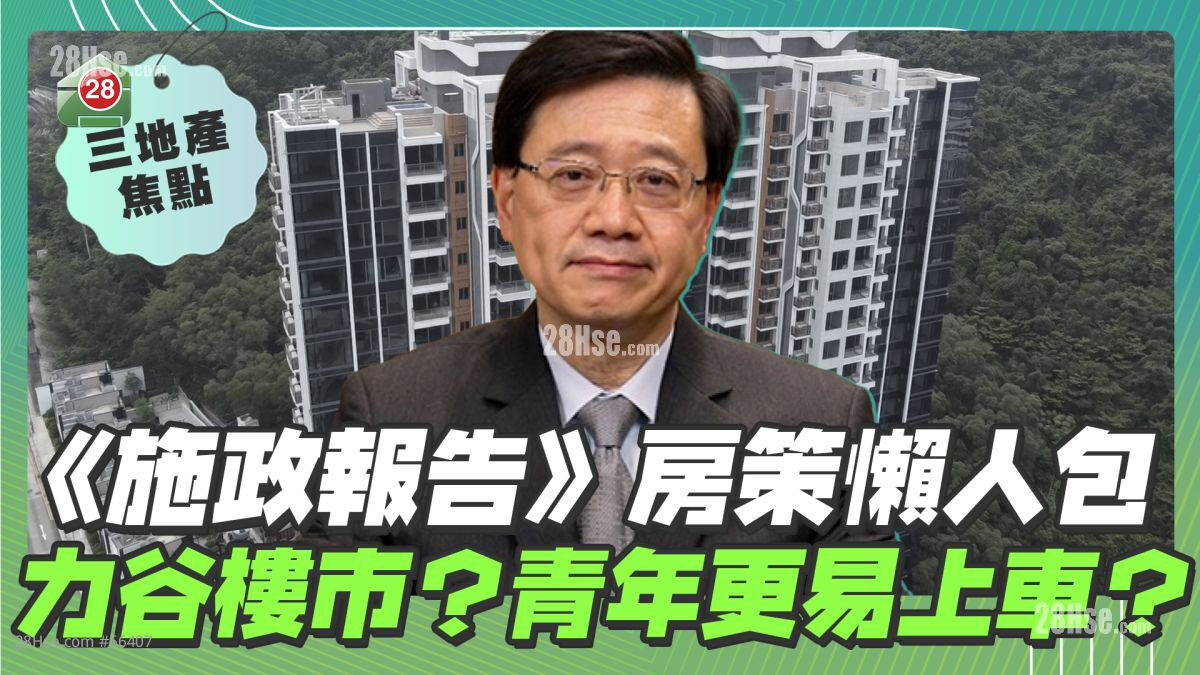The annual Policy Address was released last week, and as always, housing is a key issue of public concern. Even before the report was announced, Chief Executive John Lee had already hinted at addressing the issue of subdivided flats (also known as “劏房”), and there was much speculation in the market. So, what housing measures were ultimately introduced?
Among the various housing-related policies, resolving the subdivided flat issue was a top priority. Other noteworthy measures include tackling the abuse of public housing, relaxing mortgage caps, and introducing initiatives to help young people purchase subsidised housing.
Last year, the government established a task force to address the issue of subdivided flats. The goal was to set minimum standards for living conditions and prevent the further proliferation of substandard living spaces. After submitting its report, the task force recommended that the government legislate to regulate the rental of subdivided units in residential buildings.
Currently, there are various types of subdivided units, such as partitioned rooms, bedspaces, cage homes, and suites. To phase out these substandard living spaces, the government has set minimum standards: units must have windows, a private toilet, and a minimum area of eight square meters (approximately 86 square feet). Units that meet these criteria will be classified as " Basic Housing Units”.
Since converting non-compliant units into Basic Housing Units will take time, the government will establish a registration system. Owners of registered units will be granted a grace period, during which no enforcement action will be taken against illegal rentals. After conversion, owners will need to pay for professional certification of their units. Once the grace period expires, owners who continue to rent out non-compliant units will face criminal liability, though tenants will not bear legal responsibility.
Earlier reports suggested that the government was considering a "Youth Homeownership Savings Scheme" for individuals aged 21 to 40 without residential property. Instead of implementing this plan, the government has chosen to modify the lottery system for purchasing Home Ownership Scheme (HOS) flats.
Starting from the next round of HOS applications, applicants under the age of 40, including both families and single individuals, will receive an additional lottery number, increasing their chances of winning and selecting a flat. Additionally, 1,500 extra quotas will be added to the White Form Secondary Market Scheme (WSM), and all of these quotas will be allocated to young families and single applicants under 40, further supporting youth homeownership.
Moreover, from the next round of HOS sales, applicants who have unsuccessfully applied for the same category of flats in the last two consecutive rounds will receive an additional lottery number. So, how many lottery numbers will an applicant under 40 who has repeatedly missed out on flat selections receive? In total, such applicants can receive up to three lottery numbers, significantly increasing their chances of winning.
If an applicant also qualifies for the “Priority Scheme for Families with Elderly Members” and “Families with Newborns Flat Selection Priority Scheme”, will it be even easier to win a flat? It's important to note that participants in the aforementioned plans will not be eligible for the Youth Scheme. These applicants will only receive two lottery numbers (including the original one), as the Housing Authority has reserved 40% of the priority quotas for the “Families with Elderly Members” and “Families with Newborns” schemes to prevent double benefits.
In recent years, the Housing Authority has also intensified efforts to combat the misuse of public housing. Starting in January next year, the government will launch a “Cherish Public Housing Resources Award Scheme”, offering a reward of HK$3,000 for valid reports of public housing abuse.
To further encourage public housing tenants to purchase HOS flats, the Housing Authority will tighten policies for well-off tenants, increase extra rent for wealthy tenants, and lower the income limit for affluent households. Additionally, the Green Form and White Form quotas for HOS sales will be adjusted from the current 40:60 ratio to 50:50.
For all residential and non-residential properties, regardless of property value, whether for personal use, company ownership, or first-time buyers, the maximum mortgage cap will be uniformly set at 70%. The loan-to-income ratio will also be standardised at 50%.
Like

